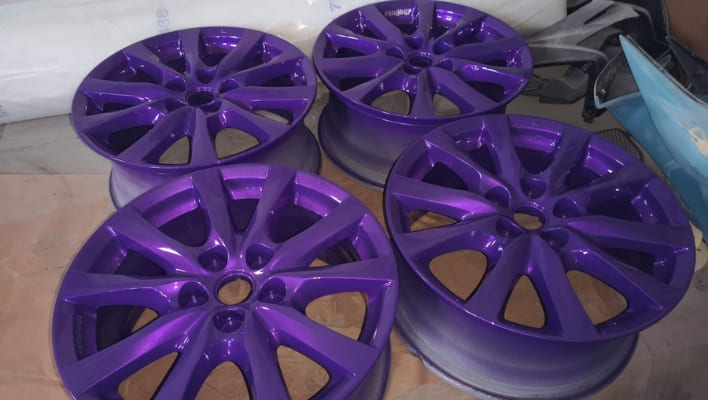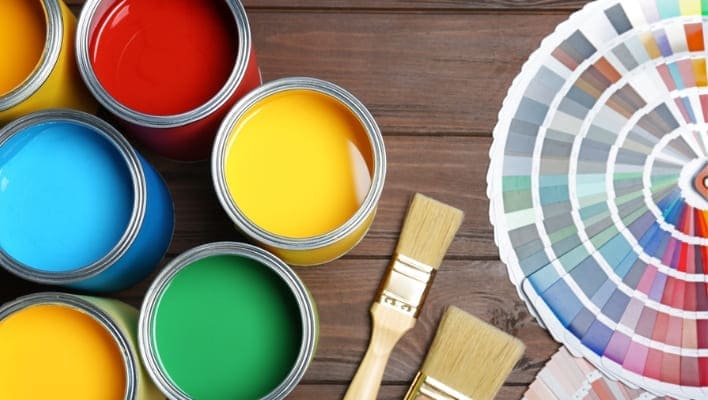Wondering how to clear lungs of spray paint? Accidentally inhaling spray paint fumes can be a worry, as the chemicals involved may lead to irritation and potential lung damage.
This guide will give you easy steps to help your lungs stay healthy and clean after using spray paint.
Inhaling steam emerges as a key solution to clear your airways and alleviate breathing difficulties caused by spray paint exposure. Additionally, proper ventilation, chest percussion, and the use of air purifiers contribute to creating a safer environment. The article also delves into natural remedies, such as coughing, drinking green tea, and adopting anti-inflammatory foods, to provide relief and promote lung health. By understanding these practical techniques, you can take proactive measures to address the aftermath of inhaling spray paint and minimize potential health hazards.
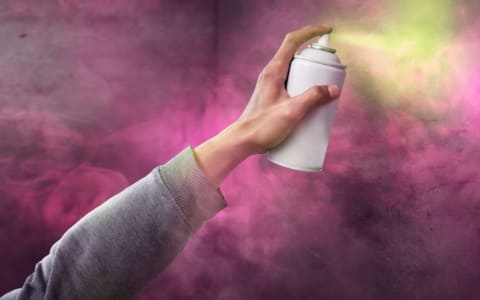
Table of Contents
- How To Clear Lungs Of Spray Paint naturally?
- Controlled coughing process
- Air purifiers
- Steam therapy
- Chest percussion
- Drink Green Tea
- Consume Fresh Air
- Must eat anti-inflammatory foods
- Avoid Using Artificial scents
- Essential Oils:
- Ventilator:
- Herbal Remedies:
- Avoid Smoking:
- Breathing Exercises:
- Vitamins for Lungs:
- Stay Hydrated:
- Can spray paint fumes damage lungs?
- Toxicity and Exposure Duration:
- Types of Spray Paint and VOC Levels:
- Isocyanates and Carcinogenic Risks:
- Chemical Components and Health Hazards:
- Specific Chemical Hazards:
- What happens if you accidentally inhaled spray paint?
- How long does spray paint poisoning last in our body?
- What happens if you accidentally inhaled spray paint while pregnant?
- What should I drink after inhaling paint?
- Conclusion:
- Martina Hitchcock
How To Clear Lungs Of Spray Paint naturally?
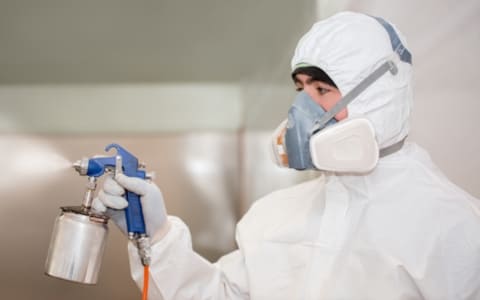
People often asked about, What to do after inhaling spray paint fumes?
Inhaling aerosol spray paint fumes can pose a threat to our lungs, but there’s no need to worry immediately if exposed.The damage doesn’t occur instantly, and it’s essential to remain patient. These methods may not offer an immediate solution, but they can contribute to clearing your lungs faster.
Here are 15 ways to cleanse lungs of spray paint;
Controlled coughing process
Coughing is a natural way for your body to clear out toxins trapped in mucus, especially after exposure to spray paint fumes. I find controlled coughing helpful in getting rid of these toxins effectively. Here’s what I do:
- Find a comfy chair and sit with your feet on the floor and shoulders relaxed.
- Cross your arms over your stomach and take a slow breath in.
- Exhale slowly, leaning forward with your arms pressing into your stomach.
- Cough gently 2-3 times with your mouth slightly open.
- Inhale slowly again and repeat these steps.
By practicing this routine multiple times each day, you can effectively clear your lungs from spray paint fumes. It might take a few extra coughs, but you’ll notice the excess mucus and paint irritation subsiding. After coughing, you’ll feel your lungs less congested, making it easier to breathe.
Note: Explore the valuable tips on safely spray painting indoors in our detailed guide!
Air purifiers
Air purifiers are effective in removing spray paint fumes and other pollutants from the air, promoting cleaner and safer breathing environments. By using a device with HEPA filters, up to 99.97% of airborne particles, including toxins from paint, can be removed. While air purifiers enhance indoor air quality, they’re not a replacement for ventilation. Always prioritize fresh air and, if symptoms persist after painting, consult a medical professional.
Steam therapy
Steam therapy, also known as steam inhalation, is a beneficial method to open the airways and clear spray paint from the lungs. Inhaling steam vapor helps loosen mucus, making it easier to eliminate toxins. You can try this by boiling water, placing it in a bowl, and positioning your head about 10 inches away. Wrap a towel around yourself and breathe in steam for 10 to 15 minutes. This approach, commonly used for asthma and COPD patients, can aid in improving respiratory performance. Don’t use water that’s too hot, and cover your head to make sure the steam works well.Steam therapy
Chest percussion
Chest percussion is a helpful technique to clear the lungs of spray paint and accumulated mucus. In this method, a respiratory therapist may use their cupped hand to tap rhythmically on your chest wall, loosening trapped mucus in the lungs. This procedure, often combined with postural drainage, can effectively reduce inflammation and clear airways. It’s essential to note that chest percussion is considered a form of exercise, and if you have any breathing issues, it’s recommended to consult with your physician before attempting it.
Drink Green Tea
Drinking green tea daily, rich in antioxidants, helps reduce lung inflammation and lowers the risk of respiratory issues due to spray paint exposure. Studies suggest it improves oxygen levels and may prevent chronic lung diseases. Simply brew green tea, let it cool a bit, add a tea bag, steep for 2-3 minutes, and enjoy. Adding soy milk is optional. This ancient practice, dating back 5000 years in China, still provides health benefits for lung inflammation and overall respiratory well-being.
Consume Fresh Air
Taking deep breaths is therapeutic, stimulating the lymphatic system and aiding toxin removal. Find fresh air, lie down, and follow the steps to detoxify your body. This simple practice helps combat stress, anxiety, pain, high blood pressure, and indigestion. Repeat 3-4 times for maximum benefits.
Exercise regularly to enhance breathing, blood circulation, and oxygen supply. Seek your doctor’s advice if you have lung diseases.
Must eat anti-inflammatory foods
Including anti-inflammatory foods in your diet can be helpful in reducing inflammation in the airways and lungs, providing relief for symptoms caused by inhaling spray paint fumes. Foods like tomatoes, olive oil, green leafy vegetables, blueberries, walnuts, beans, cherries, olives, turmeric, and lentils are known for their anti-inflammatory properties.
If you’re experiencing chest heaviness or difficulty breathing due to inhaling spray paint, incorporating these foods rich in vitamins, minerals, and antioxidants can contribute to improving lung health and easing symptoms.
Avoid Using Artificial scents
After inhaling spray paint fumes, it’s important to avoid using perfumes or other artificial scents for a few weeks or months. These scents contain VOCs that can hinder lung recovery. Steer clear of perfumes and scented products like nail polish, detergents, and fabric conditioners to prevent further damage and allow your lungs to heal.
Essential Oils:
Use oils like eucalyptus or peppermint to help with lung discomfort from spray paint. When these oils are diffused or inhaled, they could potentially aid in soothing and easing the airways.
Ventilator:
A ventilation system, like a fan or exhaust, can help in reducing the concentration of spray paint fumes in a space. By constantly cycling fresh air and pushing out the contaminated air, it minimizes the exposure to harmful substances, creating a more breathable environment.
Herbal Remedies:
Certain herbal solutions, including mullein and lobelia, have historical usage for supporting respiratory wellness. Utilizing herbal concoctions like teas might offer benefits in terms of alleviating inflammation and fostering clearer respiratory pathways. Always consult with a healthcare expert when considering herbal treatments.
Avoid Smoking:
The combination of spray paint vapors and cigarette smoke can intensify respiratory distress. Eliminating smoking or any exposure to secondhand smoke is vital for maintaining lung health. The amalgamation of both can significantly deteriorate respiratory functions.
Breathing Exercises:
Regularly practicing specific breathing techniques can bolster lung capacity and help expel residual paint-related irritants. Methods such as deep breathing or controlled exhalations can optimize lung expansion and facilitate efficient oxygen intake.
Vitamins for Lungs:
Vitamins, especially those like C and E, are pivotal for optimal lung functionality and protection against potential oxidative challenges. Consuming a diverse diet that encompasses various fruits and vegetables can ensure a robust intake of these vital nutrients, assisting in the natural rejuvenation of lung tissues.
Stay Hydrated:
Proper hydration supports the mucosal linings of the respiratory tract. Adequate water intake can help in thinning out mucus, making it simpler to remove any foreign particles or irritants from the lungs. Consistent hydration is a fundamental aspect of maintaining clear respiratory pathways.
Can spray paint fumes damage lungs?
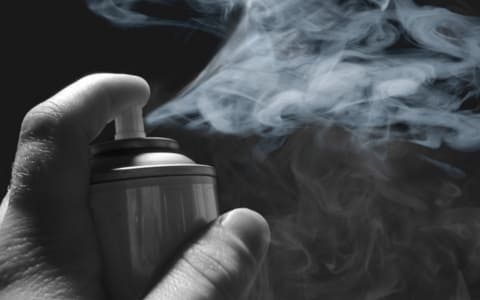
Spray paint fumes can have detrimental effects on lung health due to the presence of volatile organic compounds (VOCs). These compounds, released into the air during the painting process, pose potential risks to individuals.
Toxicity and Exposure Duration:
The toxicity of spray paint fumes varies based on the type of paint and the duration of exposure. Different VOCs in spray paints contribute to health risks, emphasizing the need for caution and proper ventilation, especially with paints containing higher VOC levels.
Types of Spray Paint and VOC Levels:
Choosing paints with lower VOC levels is advisable, irrespective of the paint type. You can select water-based or acrylic spray paints as they generally have lower levels of volatile organic compounds (VOCs) compared to oil-based options.
Proper ventilation is crucial to minimize health risks associated with these chemicals.
Isocyanates and Carcinogenic Risks:
Certain spray paints contain isocyanates, known potential carcinogens. This adds an additional layer of risk, highlighting the importance of safety measures in both home and professional settings.
Chemical Components and Health Hazards:
Spray paints consist of various chemicals, each presenting specific health hazards. Understanding these components is vital to recognizing potential risks associated with exposure.
Specific Chemical Hazards:
- Carbon Black: Can lead to irritation of eyes, nose, and throat, as well as lung complications.
- Methyl Ethyl Ketone: Poses hazards to the eyes, nose, and skin, requiring careful handling.
- Liquefied Petroleum Gas (LPG): It poses asphyxiant properties, potentially causing unconsciousness or fatal suffocation. Take precautions when dealing with this substance.
- Xylene: A flammable liquid with dangers such as irritation, headaches, dizziness, and even death.
- n-Butyl Acetate: Colorless, flammable liquid with risks of eye and skin irritation, respiratory problems, and depression.
- Ethylbenzene: It is known for its sweet scent, may result in throat irritation, chest constriction, eye irritation, and dizziness. Be mindful of exposure to prevent discomfort.
- Magnesium Silicate: While less hazardous, overexposure to magnesium silicate can lead to bladder and renal failure. Take necessary steps to avoid potential health risks associated with this substance.
What happens if you accidentally inhaled spray paint?
Inhaling spray paint fumes can cause various health issues. Short-term symptoms of spray paint poisoning includes headaches, queasiness, lightheadedness, and discomfort in the eyes, nose, or throat. More severe symptoms may involve vomiting, wheezing, chest pain, and shortness of breath. Prolonged contact with these fumes can escalate to significant health issues, impacting essential organs such as the lungs and kidneys.
Seeking medical attention is important if you experience these symptoms. Pregnant women and children should be cautious, and using water-based paints in well-ventilated areas or wearing respirator masks is recommended for protection.
How long does spray paint poisoning last in our body?
Some chemicals in spray paint fumes may stay in the body longer for several days to weeks, especially if there was significant exposure or inadequate ventilation. It’s advisable to avoid the painted area during this period until the fumes have entirely dissipated.
What happens if you accidentally inhaled spray paint while pregnant?
Most modern paints pose minimal risk to pregnant women, it’s best to avoid prolonged exposure to fumes, especially from older or solvent-based paints that may contain lead. Pregnant women should exercise caution, especially in the later stages of pregnancy, due to potential risks to the baby’s development.
To minimize risks:
- Avoid rooms being painted; if unavoidable, keep windows open.
- Discuss protective measures with employers if exposed at work.
- Consider hiring professionals for painting tasks during pregnancy.
- Opt for low-VOC or zero-VOC paints.
- When using traditional paint, ensure good ventilation and wear a protective mask.
What should I drink after inhaling paint?
For throat irritation after inhaling paint, drink cool fluids like water or milk. However, drinking milk doesn’t absorb paint fumes; it simply soothes the throat.
Conclusion:
In conclusion, ensuring proper ventilation while painting, wearing appropriate protective gear such as masks, and taking breaks in well-ventilated areas are essential steps to safeguard your lungs from harmful chemicals. It’s always advisable to prioritize safety and be aware of the risks associated with exposure to spray paint to prevent long-term health complications.

Martina Hitchcock
Martina Hitchcock is a versatile author with expertise in different fields. As a paint sprayer expert, she has in-depth knowledge of paint spraying techniques, tools, and equipment. Martina is also an experienced home remodeler who has worked on various projects, including kitchen and bathroom renovations, flooring installations, and room additions. Her knowledge of home improvement and remodeling is extensive, and she enjoys sharing her insights and tips with readers. You can follow her on Facebook.

